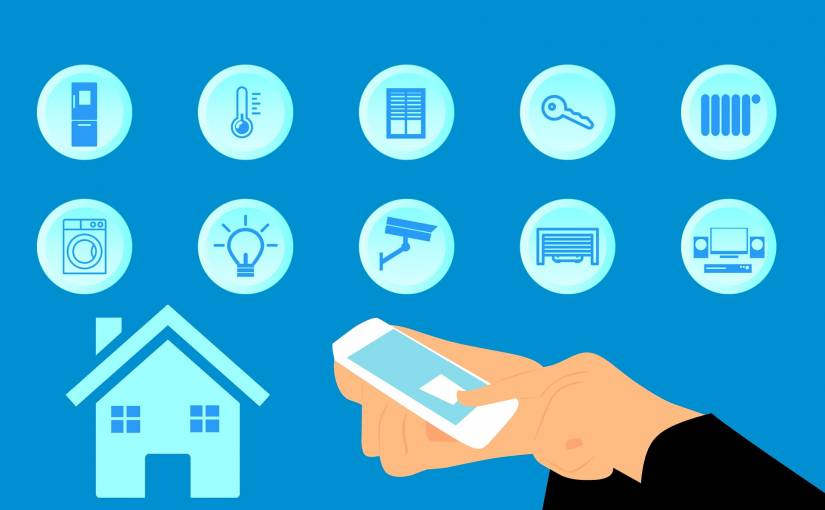Many of us have been cooped up inside for months in the face of the ongoing pandemic, transforming our living spaces into all-in-one offices, gyms, and schools. As a result, those lucky enough to be working remotely and earning expendable income during the “new normal” have been investing in upgrades for the home.
The upgrades for the home is evident.
The home’s upgrades are evident in the embrace of connected devices that transform today’s humble abodes into tomorrow’s smart hubs. We are scrambling for new gadgets that are energy efficient and have automation, convenience, affordability. We want devices that give us enhanced health and wellness.
Energy efficiency shows great promise to simultaneously cut energy bills and carbon emissions in the post-pandemic world.
With the world’s climate crisis at a tipping point, this moment could be the trigger that sees millions of homeowners install advanced monitoring to optimize energy use.
Today’s shift towards smart energy products sets us on the right course for an evolution following COVID-19. Still, it is one that must be pursued relentlessly and backed by cybersecurity best practice.
Working From Home Or Living At The Office?
The world we know is vastly different from the world we knew. Offices have moved online; supply chains have been turned upside down, international routes have largely ceased.
People, meanwhile, have been ordered indoors. About 30% of the global population has been put in lockdown with different levels of nation-wide quarantines, forcing many to spend more time at home than ever before.
The mass uptake of working from home or living at the office all depends on your perspective.
Working from home is subsequently changing how people interact with their living spaces. Without the possibility of vacations or lavish dining experiences — many homeowners are spending what disposable income they have on home upgrades.
No lavish upgrades right now.
However, the upgrades are not simple furnishings or decorations but rather smart devices that bring comfort and efficiency.
Smart thermostats, smart lighting, smart garden sprinklers – smart everything – are becoming commonplace inside the contemporary home.
The ongoing lockdowns are predicted to spur the global market for smart home devices to 18% growth this decade.
A Peek Inside Today’s Smart Energy Home
There are two ways to look at contemporary smart energy inside the home. First, there are standalone devices. These products serve specific efficiency purposes, like regulating the power flow to outlets or automatically turning off lights.
The most popular of these smart additions remain heating and cooling upgrades since air conditioning consumes approximately 40 percent of any building’s electricity.
For example, the German smart thermostat company Sorel enables remote app access to display home temperatures and humidity in real-time. You can even select the operating mode and target temperatures, monitor the correct functioning of the system. The thermostat configures a time program, and activate holiday mode.
Standalone products are all about identifying waste and shifting consumer habits.
Second, there are devices that monitor energy production and manage the home’s overall energy use.
Home energy management solutions are much more holistic with a ‘hub’ communicating between devices that produce and store energy in the home. This includes solar panels, battery storage, and devices that use energy within the home – appliances, heating.
In some cases, these energy systems allow for two-way communication between energy providers and end-users. The communication can result in huge energy and cost savings since the end-user can take advantage of different time-dependent pricing schemes such as time-of-use tariffs, critical peak pricing, and real-time pricing.
The Bigger (Greener) Picture
Perhaps the best part of smart home energy is the elegance of the solution. Smart home products do not try to restrict the homeowner’s energy consumption, nor do they try to force them into doing it alone. Instead, these products often use machine learning to track the homeowner’s lifestyle and find ways to cut bad energy habits.
Regardless of whether homeowners choose to integrate standalone devices or larger smart energy systems, the desired result is the same: to cut unnecessary energy use. The insights and efficiencies offered by smart homes can cut home energy costs by 40 percent. This is an especially important reduction when the economy is down, money is tight, and housing accounts for one-third of the average budget.
More important than the financial savings are environmental savings.
Humanity finds itself on the climate precipice, so many have warned about, with experts calling for global carbon-based emissions to be cut in half by 2030. Housing contributes to one-third of global emissions, and its evolution – or not – will make or break such ambitions.
Thus, this one-two punch of economic and environmental benefits presents a powerful case for further smart home integration in the post-pandemic world.
Why Cybersecurity Matters in Smart Energy
As with any expansion to connected devices, however, it is imperative to consider cybersecurity. Connected devices are infamous for their weak security protocols, and this risk only multiplies if hackers gain access to any home’s energy production or management capabilities.
There are too many hacker horror stories to count – from children being harassed through Amazon Ring to vulnerable connected cardiac devices – and these security blindspots are much more pronounced when dealing with something as integral as energy.
Industrial energy companies have been the target of cyberattacks during this pandemic. In many cases, hackers using phishing emails have sought to gain access to the computers of remote workers and disable company systems for a ransom.
But security experts warn that about a dozen state-sponsored actors have been trying to infiltrate US networks and meddle in the nation’s energy supply.
Homeowners, therefore, must enter into smart energy with best-practice cybersecurity solutions.
One way to do this is by selecting devices that ensure commands between the client and the device are not intercepted by any third-party, such as peer-to-peer. Sorel, for example, uses this private connection type in its heating system to ensure the smartphone app communicates without interference.
Moreover, the peer-to-peer connection offers the company minimized risk since end-users only manage their data on their device.
The reward of smart energy for the home far outweighs the risk when safeguards are in place. Therefore, conscious homeowners who do their research and protect themselves should not stop taking the smart energy plunge.
Planning for Tomorrow Starts Today
While it is tough to find silver linings in moments like this, they are there. Smart energy devices are growing within the modern home, household power bills and carbon emissions are falling as a result, and consumers are learning more about energy responsibility and conservation.
These are all very positive developments, and they are developments that would not have happened as quickly without the pandemic.
Additionally, smart energy evolution is far from over. Smart home products offer many other benefits in addition to energy efficiencies, and these encourage further uptake.
For example, smart products can enhance home security, offer telemedical functions, assist the elderly, and bring lifestyle benefits like connectivity.
Smart energy tech is only predicted to grow further as the market of other products matures, such as electric vehicles, vehicle-to-grid, solar power, and battery storage, all of which can be integrated into a smart household energy system.
In addition to these positive trends, homeowners are increasingly willing to pay for smart home solutions. A recent study of New York residents during lockdown found that most are willing to pay for home energy management systems.
The study found relatively high intentions to adopt home energy management systems among the more than 600 surveyed, with nearly 80 percent willing to pay in general and about 30 percent willing to pay more than $5 per month for such energy features.
Reevaluation of energy within the modern household could not come at a more important time. Energy is a sparse resource and one which contributes significantly to our collective carbon footprint.
While most people implementing smart energy solutions are likely more interested in the monetary savings, their environmental importance must not be overlooked when the world has just ten years to halve its emissions.
Today’s shift towards smart energy products sets us on the right course for an evolution following the pandemic, but it is one that must be pursued relentlessly and implemented entirely.









